
In this lesson, students write summaries of researched information in their own words and quote text accurately.
- Subject:
- Arts
- English Language Arts
- Material Type:
- Lesson Plan
- Provider:
- BetterLesson
- Date Added:
- 12/01/2022

In this lesson, students write summaries of researched information in their own words and quote text accurately.

Biology 2e is designed to cover the scope and sequence requirements of a typical two-semester biology course for science majors. The text provides comprehensive coverage of foundational research and core biology concepts through an evolutionary lens. Biology includes rich features that engage students in scientific inquiry, highlight careers in the biological sciences, and offer everyday applications. The book also includes various types of practice and homework questions that help students understand—and apply—key concepts. The 2nd edition has been revised to incorporate clearer, more current, and more dynamic explanations, while maintaining the same organization as the first edition. Art and illustrations have been substantially improved, and the textbook features additional assessments and related resources.

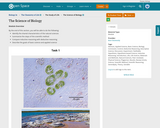
By the end of this section, you will be able to do the following:
Identify the shared characteristics of the natural sciences
Summarize the steps of the scientific method
Compare inductive reasoning with deductive reasoning
Describe the goals of basic science and applied science

A site that defines and describes the dangers and realities of plagiarism. Also gives information on why students plagiarize, strategies for preventing, making plagiarism-proof assignments, and links to other sites.

A thorough guide to copyright laws regarding different types of print and electronic media. Includes many links to articles, copyright and fair use laws, and other resources, as well as a video and, in the last section, a quiz to test your knowledge of copyright.
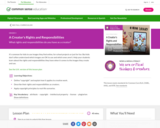
What rights and responsibilities do you have as a creator? It's common for kids to use images they find online, for school projects or just for fun. But kids don't often understand which images are OK to use and which ones aren't. Help your students learn about the rights and responsibilities they have when it comes to the images they create and use. Approximately 45 mins.
LESSON OBJECTIVES: Define "copyright" and explain how it applies to creative work. Describe their rights and responsibilities as creators. Apply copyright principles to real-life scenarios.

This collection contains two lesson plans and an interactive game that will facilitate discussion and deepen understanding of the complex issues raised in the documentary film, A Fragile Trust: Plagiarism, Power, and Jayson Blair at The New York Times. Students will be encouraged to think critically about the daily pressures faced by journalists and media makers in a fast-paced and quickly changing field.

This collection contains two lesson plans and an interactive game that will facilitate discussion and deepen understanding of the complex issues raised in the documentary film, A Fragile Trust: Plagiarism, Power, and Jayson Blair at The New York Times. Students will be encouraged to think critically about the daily pressures faced by journalists and media makers in a fast-paced and quickly changing field.

This is a google slides presentation that requires students to complete various tasks related to the following topics:
a) web safety
b) website evaluation
c) copyright
d) plagiarism
e) citations
Students then choose one of those topics and produce an artifact that reviews what was learned within the modules. Project choices include a video, podcast or infographic.

This video is a story about students who cheat in college. It looks at the many reasons why students commit academic dishonesty. [2:42] The module includes questions to think about and discuss and links for further research.
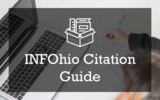
The INFOhio Citation Guide includes a variety of websites, tutorials, documents, and videos for grades 6-12 to support students as they cite sources and provide attribution for resources and images used during the research process.

Uses examples to explain the right and wrong way to use reference material. Shows how a rewrite can still be plagiarism. Briefly discusses common knowledge and paraphrasing.
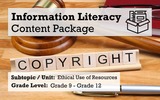
As high school students transition from consumers of information to creators of multimedia projects, understanding copyright, fair use, and citation issues is critical for educators and students. Students must be aware of the complexities of using online information, including text, images, audio, and video. Teachers require high-quality materials to support the teaching of information literacy, especially using resources ethically and responsibly. This content package is intended for educators to easily find lessons, eBooks, videos, articles, and other resources to support the teaching of using various content ethically and to help students understand their responsibility as creators to cite others' work.

A screencast lesson discussing different types of plagiarism and examining the issue including consequences and solutions. [3:20]

This lesson discusses the issue of plagiarism and types of plagiarism. It is 5 of 5 in the series titled "Plagiarism." [6:06]

Provides guidance on the ways to quote, paraphrase, and summarize information. Gives various reasons for paraphrasing, summarizing, and quoting various sources.

Contains plans for two lessons about the research process. Students discuss plagiarism, practice paraphrasing, and cite sources. In addition to objectives and standards, these instructional plans contain links to sites used in the lessons as well as assessment and reflection activities.
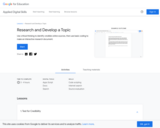
Use critical thinking to identify credible online sources, then use basic coding to make an interactive research document. Time to complete: 3-4 hours